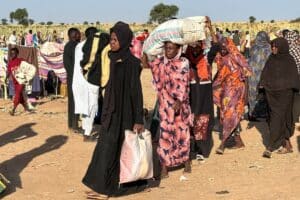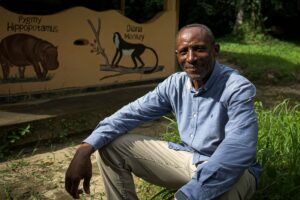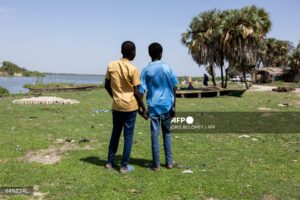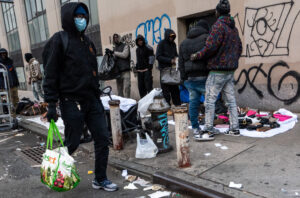Monday, September 11, 2023
Tikht, Morocco
Moroccan rescue workers, supported by foreign teams, were racing against time on Monday to find possible survivors and provide assistance to hundreds of homeless people, more than 48 hours after the earthquake that killed more than 2,100 people.
The earthquake, the deadliest in the kingdom for over sixty years, devastated entire villages in a region southwest of the tourist city of Marrakech (central Morocco).
In several localities, members of the security forces continued to help dig graves for the victims, while others set up yellow tents for evacuees who had lost their homes.
In Marrakech, on Avenue Mohamed VI, dozens of people still spent the night outdoors, lying on the central reservation or at the foot of their cars parked in parking lots.
In the stricken region, rescue workers, volunteers and members of the armed forces are working to find survivors and pull bodies from the rubble, particularly in villages in the province of Al-Haouz, the epicenter of the quake south of Marrakech.
On Sunday evening, Morocco announced that it had responded favorably, “at this stage”, to offers from four countries to send search and rescue teams: Spain, Great Britain, Qatar and the United Arab Emirates.
These teams have been in contact with their counterparts in Morocco with a view to coordinating efforts, said the Ministry of the Interior.
Spain said it had sent 86 rescue workers to Morocco, accompanied by dogs specialized in searching for victims. A humanitarian flight took off from Qatar.
Other offers could be accepted in the future “should needs evolve”, the ministry added.
– “The village is dead” –
Numerous countries, from France to the United States, via Israel, have offered their help after the earthquake, which left 2,122 people dead and 2,421 injured, according to a latest official toll published on Sunday.
“Morocco is a sovereign country and it is up to it to organize the relief effort,” reacted French Foreign Minister Catherine Colonna. She announced 5 million euros in aid for NGOs currently “on the ground” in Morocco.
Pending the arrival of new foreign rescue teams, the Moroccan authorities have begun to erect tents in the High Atlas, where villages have been completely destroyed by the earthquake.
In Tikht , a small village near Adassil, a minaret and a handful of unpainted clay houses stand amidst an apocalyptic landscape.
“Life is over here,” laments Mohssin Aksum, 33, a resident. “The village is dead.”
The earthquake, which struck late on Friday evening and registered a magnitude of 7 according to the Moroccan Center for Scientific and Technical Research (6.8 according to the US Seismological Service), is the most powerful ever measured in Morocco.
– Solidarity –
Faced with the scale of the damage, solidarity is being organized in Marrakech, where many residents have rushed to hospitals to donate blood.
“We’re collecting food to help the affected areas,” Ibrahim Nachit, a member of the Draw Smile association, told AFP, who is also planning to send a “medical caravan” to the stricken areas.
“The food supplies (already) collected should be able to support at least 100 families for a week”, said Abdeltif Razouki, vice-president of the association.
In addition to the loss of human life and the destruction of villages, the kingdom’s architectural heritage was affected by the earthquake. In Marrakech, on the 700-hectare medina, the old city, the damage is impressive in places.
The 12th-century ramparts surrounding the imperial city, founded around 1070 by the Almoravid dynasty, are partly disfigured.
“We can already say that they (the damage) are much more extensive than we expected. We’ve seen major cracks in the minaret of the Koutoubia (mosque), the most emblematic structure, as well as the almost complete destruction of the minaret of the Kharbouch mosque” on the Place Jemaa el-Fna, notes Eric Falt, Regional Director of Unesco’s Office for the Maghreb.
This earthquake is the deadliest in Morocco since the one that destroyed Agadir, on the country’s west coast, on February 29, 1960: almost 15,000 people, a third of the city’s population, perished.
bur/hme/tp
Agence France-Presse
In Humaniterre – Media de l’humanitaire et du développement durable





